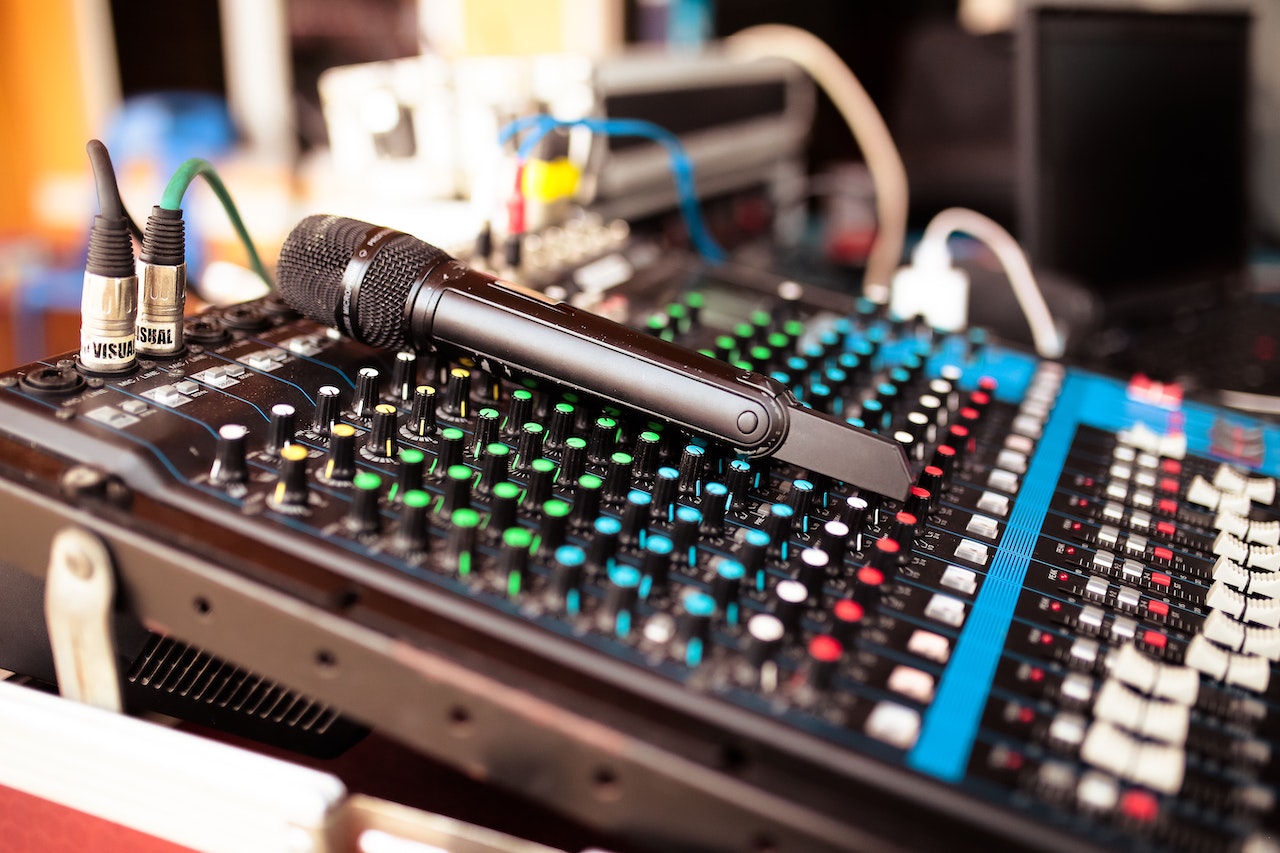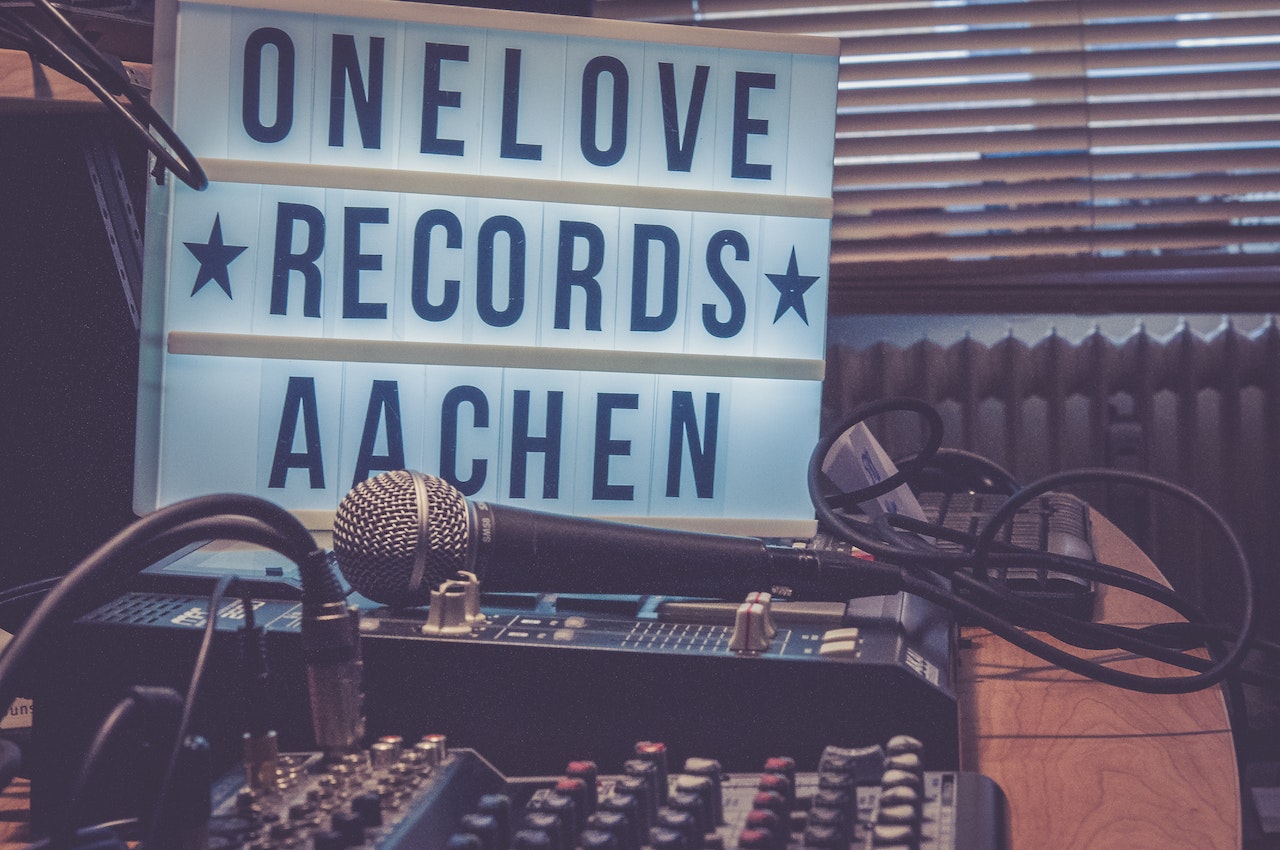In the ever-evolving world of podcast tech, it’s hard to keep up with the endless array of gadgets. But here’s the deal: if you’re serious about producing high-quality content for your podcast, a multi-USB microphone mixer should be at the top of your shopping list. Think of it as the unsung hero of your audio interfaces. Sure, it may not get the same spotlight as your shiny new microphone, but believe it, it’s doing the heavy lifting in the background.
We’ve all been in situations where poor audio quality derailed an otherwise stellar production. Distorted voices, uneven sound levels, or that one guest whose voice seemed to be coming from a distant galaxy (even though they were sitting right next to you). A multi-USB microphone mixer is your shield against these audio mishaps. Ready to learn more? Let’s jump into the details!
Related: Top 9 Best Podcast Mixers
Contents
Why Use A Multi USB Microphone Mixer?
First, a fun question: Remember those one-man-band street performers with a drum on their back, a harmonica, and a couple of cymbals between their knees? Imagine if they had a tool that could connect multiple microphones individually. That’s essentially what a multi-USB microphone mixer does for your audio setup. Neat, huh?
Multiple Input Sources
In the world of audio, versatility is gold. The ability to handle multiple USB microphones without a glitch can transform the quality of your recordings. Let’s break down why this feature is a game-changer.
Simultaneously Capturing Multiple Voices
All right, picture this: You’re hosting a lively podcast roundtable with three other experts in your field. Everyone’s excited, chiming in, offering valuable insights… but here’s the kicker. With a basic audio setup, their voices might overlap, overshadow, or get lost in the mix.
But with a multi-USB microphone mixer, you can easily capture each voice separately, ensuring every comment shines through crystal clear. It’s like having individual volume knobs for each speaker. No more asking, “Can you repeat that?” or cringing at overlapping chatter during playback.
Diversifying Audio Sources For Complex Setups
Beyond just voices, consider the audio intricacies of a multi-layered YouTube tutorial or a digital audio workstation production. Maybe you’re layering a voiceover with background music, sound effects, and other audio elements.
With a mixer, each source can be plugged into its own dedicated channel. This ensures that every sound source, whether it’s a musical instrument or a digital sound effect, gets its own spotlight, resulting in a richer, more nuanced final product.
Precise Audio Control
Ever wished for a magic wand to tweak and adjust every audio aspect? Enter the multi-USB microphone mixer. It’s your audio control center, enabling precision like never before. Let’s see how.
Individual Channel Adjustments
Each channel on your mixer is like a mini audio lab. You can adjust the bass, tweak the treble, or amplify certain frequencies. Ever had a guest with a soft voice? Or one with a deep bass that made your speakers rumble. With individual channel adjustments, you can ensure that each audio source is tailored to perfection. Gone are the days of one-size-fits-all adjustments!
Fine-tuning Audio Balance
And speaking of balance, let’s chat about harmony. In any audio setup, achieving the right balance between various sound sources is crucial. Maybe your intro music is drowning out your opening remarks. Or perhaps the ambient sounds in your documentary are overshadowing the narration. With a multi-USB microphone mixer, you can fine-tune each element, achieving that perfect harmony where everything is audible, clear, and balanced.
Streamlined Post-Production Process
We all wish for fewer hours spent in post-production, right? A multi-USB microphone mixer can be your secret weapon. Curious? Read on!
Reducing Editing Time
Let’s be real; post-production can be a beast. Sifting through hours of audio, trying to balance uneven voices, or editing out that pesky background hum can be time-consuming and, quite frankly, a bit maddening. But what if I told you a multi-USB microphone mixer could cut that editing time down significantly? By capturing clean, balanced audio from the start, there’s less need for those endless post-production tweaks. Time is money, right?
Providing Better Source Material
Lastly, a word on quality. The high-quality source material is the backbone of any great audio project. Instead of relying on post-production magic to salvage poor recordings, a mixer ensures you’re starting with the best possible material. And as any seasoned producer will tell you, a good start can make all the difference. When you begin with pristine, well-balanced audio, the final product is bound to shine.
Top 5 Multi USB Microphone Mixers In The Market
Let’s get down to the brass tacks, shall we? Here are five of the best multi-USB microphone mixers currently making waves in the market.
Yamaha AG06 6
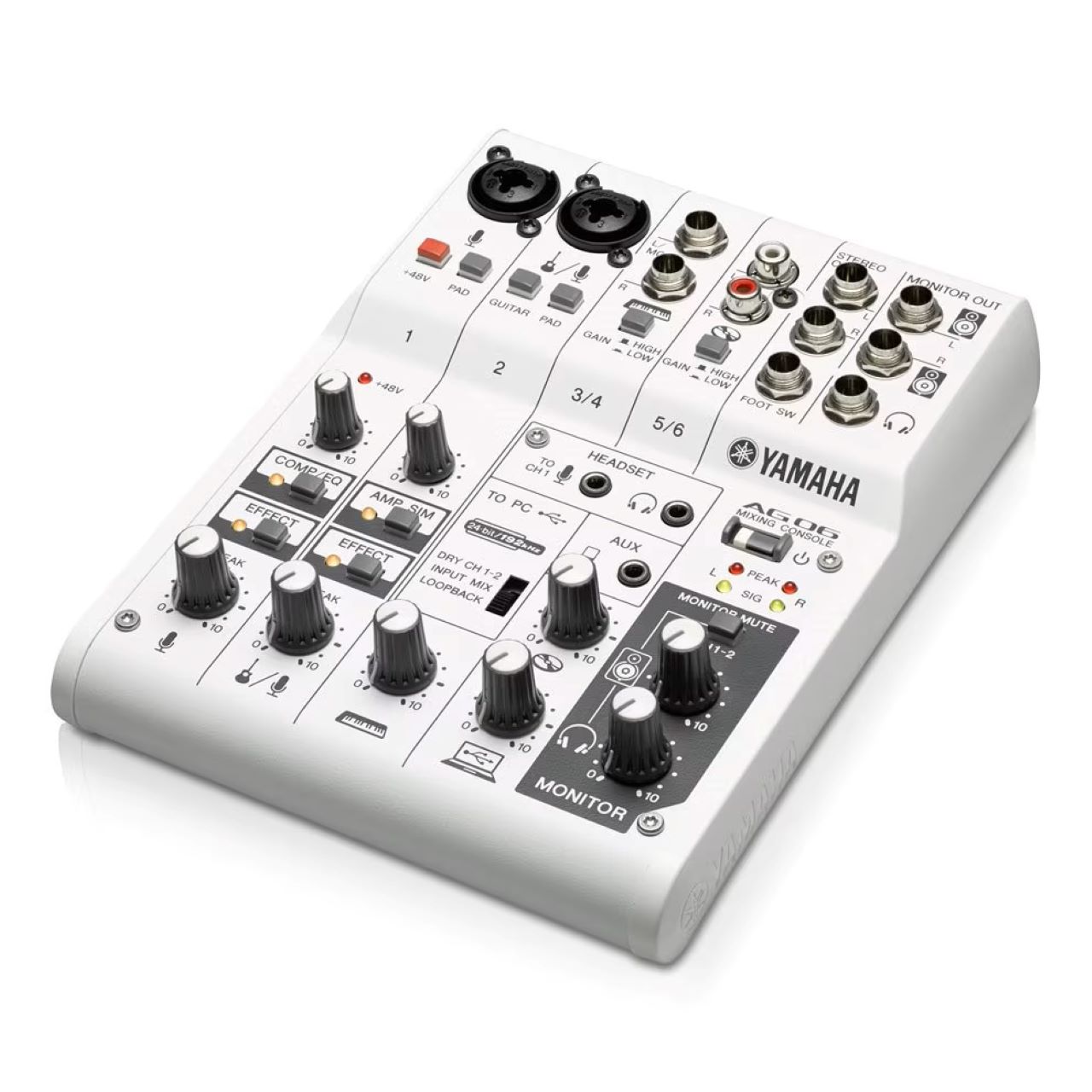
The AG06 offers high resolution (24-bit192kHz) 2-track audio recording and playback. Image Source.
Yamaha, a brand that needs no introduction in the audio landscape, presents the AG06 6—a compact mixer designed for a variety of audio tasks. Whether you’re a podcaster looking to capture clear dialogues or a musician wanting to record instruments, this 6-channel mixer stands out with its array of features. Its blend of digital and analog technologies ensures clean sound while allowing flexibility for both live streaming and post-production tasks.
What sets the Yamaha AG06 6 apart is its adaptability. With a loopback function, it becomes an essential tool for those into live streaming or podcasting. Its compatibility with iOS devices via the class-compliant mode means you’re not just tethered to a PC, opening doors for mobile recording and streaming. Couple that with built-in effects like compressors and reverb, and you have a versatile audio companion.
Key Features
- 6-channel mixer with a variety of inputs
- Loopback function for live streaming and podcasting
- Built-in effects, including compressors, EQ, and reverb
- Class-compliant mode for iOS compatibility
Pros
- Durable build
- User-friendly interface
- Excellent for live-streaming
Cons
- No multi-track recording
- Limited onboard effects
Behringer Xenyx 1204USB Mixer with USB
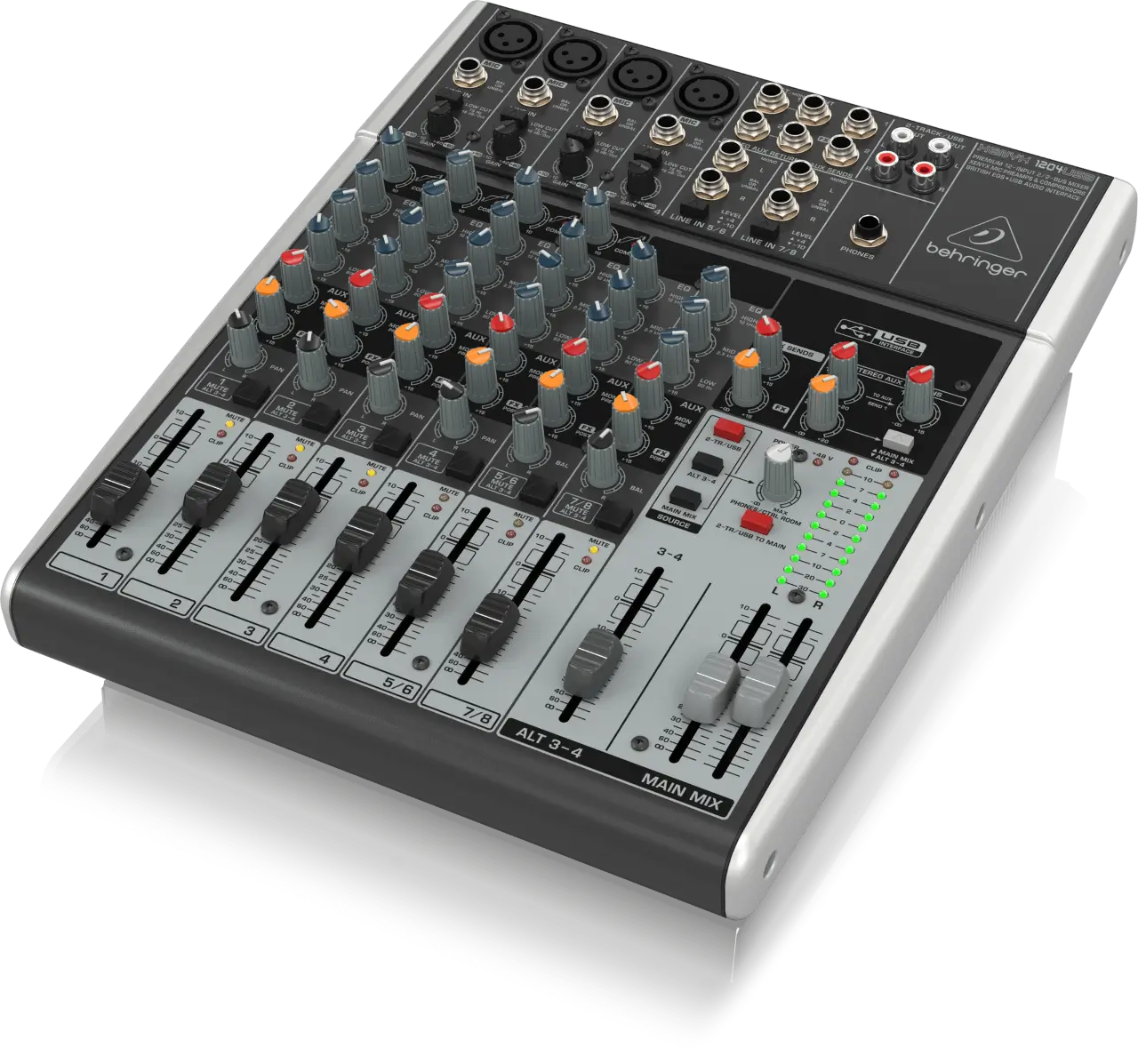
The compact XENYX 1204USB mixer allows you to effortlessly achieve premium-quality sound, thanks to its 4 onboard studio-grade XENYX Mic Preamps. Image Source.
The Behringer Xenyx 1204USB takes the stage with its commitment to studio-quality sound. A mixer that boasts 12 inputs, including 4 premium mic preamps, it’s engineered for clarity and versatility. Each channel comes equipped with a 3-band EQ, letting you dial in the perfect sound for each input source. And for those who cherish the post-production process, the USB/audio interface allows for a direct connection to a computer, ensuring seamless recording.
Another standout feature of the Xenyx 1204USB is its onboard digital effects processor, allowing creators to add professional-grade effects to their recordings. Whether you’re looking for a subtle ambiance or more pronounced sound effects, this mixer has got you covered. Despite its multitude of features, Behringer has ensured that usability remains front and center, making it accessible for both novices and professionals.
Related: How to Use the Behringer Xenyx 1204USB Phantom Power
Key Features
- 12 inputs with 4 mic preamps
- USB/audio interface for direct connection to a computer
- 3-band EQ on all channels
- Built-in digital effects processor
Pros
- Excellent sound clarity
- Versatile inputs
- Affordable price point
Cons
- Limited USB functionality
- Knobs might feel fragile
RODE RODECaster Pro
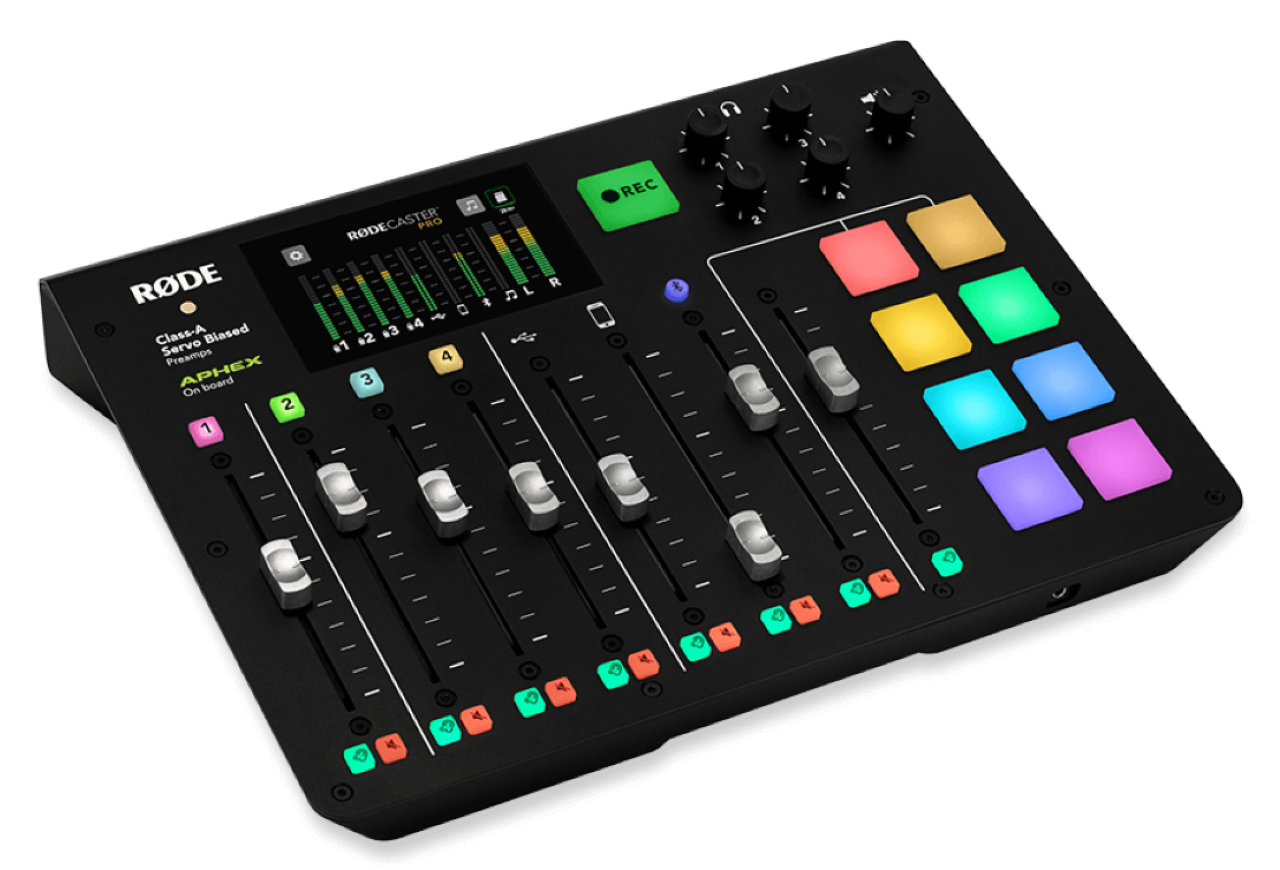
The RØDECaster Pro offers smartphone, USB and Bluetooth™ channels for remote call integration with automatic mix-minus for echo-free audio. Image Source.
In the realm of podcasting, few mixers come close to the offering of the RODECaster Pro. Purpose-built for podcasters, it showcases an interface that is as intuitive as it is functional. From its 4 high-quality XLR inputs to its 8 programmable pads for sound effects and jingles, everything about the RODECaster Pro screams podcasting excellence.
Apart from its podcast-centric features, it’s the finer touches that elevate the RODECaster Pro. The inclusion of a touch screen for control and monitoring, coupled with Bluetooth connectivity for phone calls, showcases a deep understanding of a podcaster’s needs. Whether you’re a solo podcaster or have multiple guests, this mixer ensures that every voice is captured with clarity and precision.
Key Features
- 4 high-quality XLR inputs
- 8 programmable pads for sound effects and jingles
- A touch screen for control and monitoring
- Bluetooth connectivity for phone calls
Pros
- Podcast-specific features
- Easy to use
- Robust build
Cons
- On the pricier side
- Limited channels compared to other mixers
Allen & Heath ZEDi-8 – Compact Hybrid Audio Mixer/USB Interface
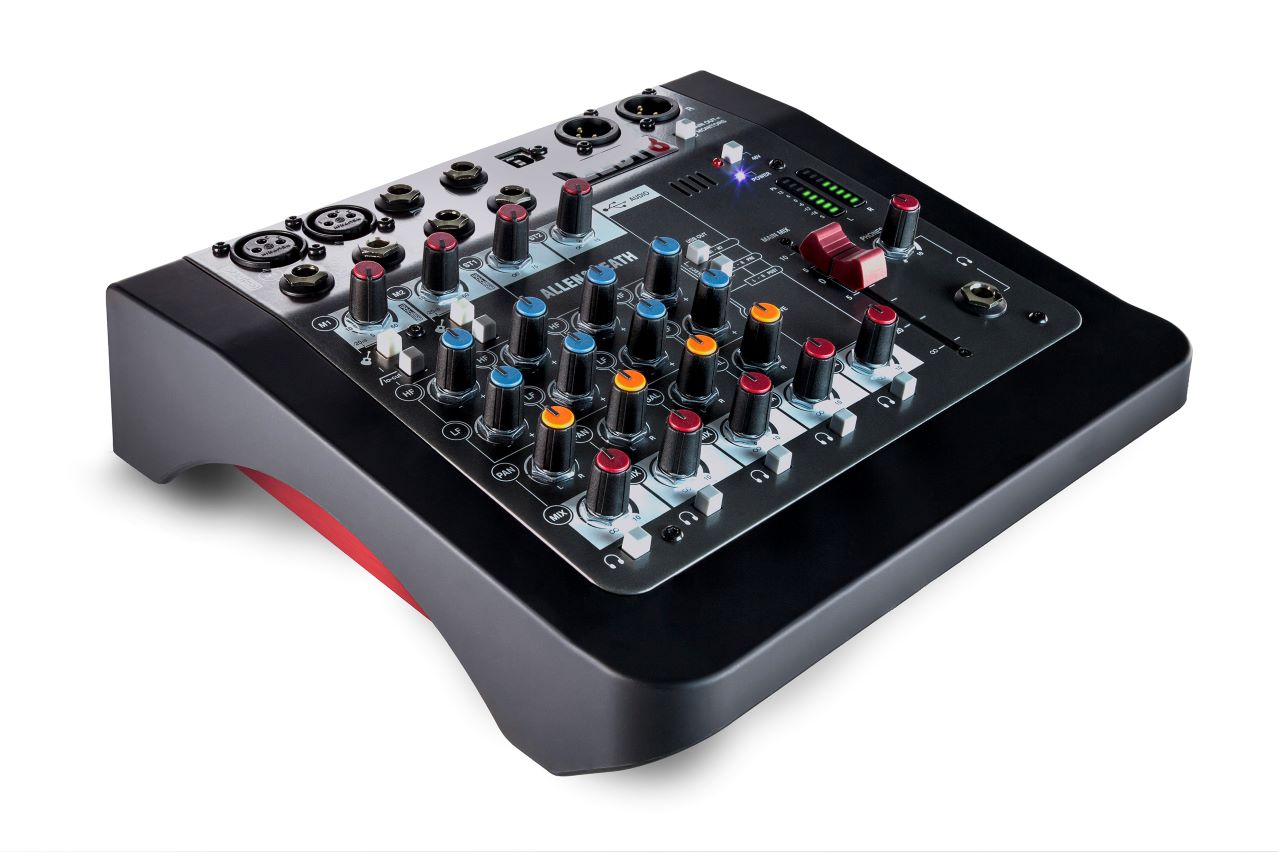
ZEDi-8 comes with two Guitar DI high impedance jack inputs, allowing guitars to be plugged straight into the mixer without the need for DI boxes. Image Source.
The ZEDi-8 from Allen & Heath is a testament to innovation. At its core, it’s a compact audio mixer, but delve a bit deeper, and you discover its hybrid capabilities. As an audio mixer and a USB interface, the ZEDi-8 promises impeccable performance whether you’re recording in a studio or performing live. It’s this versatility that makes it particularly appealing to a wide range of audio enthusiasts.
The separate XLR and TRS jack sockets with the two mic/line inputs give it the flexibility to handle different audio sources with ease. But it’s not just about inputs; the ZEDi-8 also shines with its high-quality Direct Input (DI) feature, making it a go-to for guitarists. With the inclusion of Cubase LE software, the recording becomes an even more streamlined process, adding value to this compact powerhouse.
Key Features
- TRS jack sockets with 2 stereo inputs
- Separate XLR and TRS jack sockets with 2 mic/line inputs
- High-quality DI (Direct Input) for guitars and other instruments
- Cubase LE software included for recording
Pros
- Compact size
- Hybrid Functionality
- Renowned preamps
Cons
- Limited channels
- No effects loop
PreSonus StudioLive 16.0.2 USB
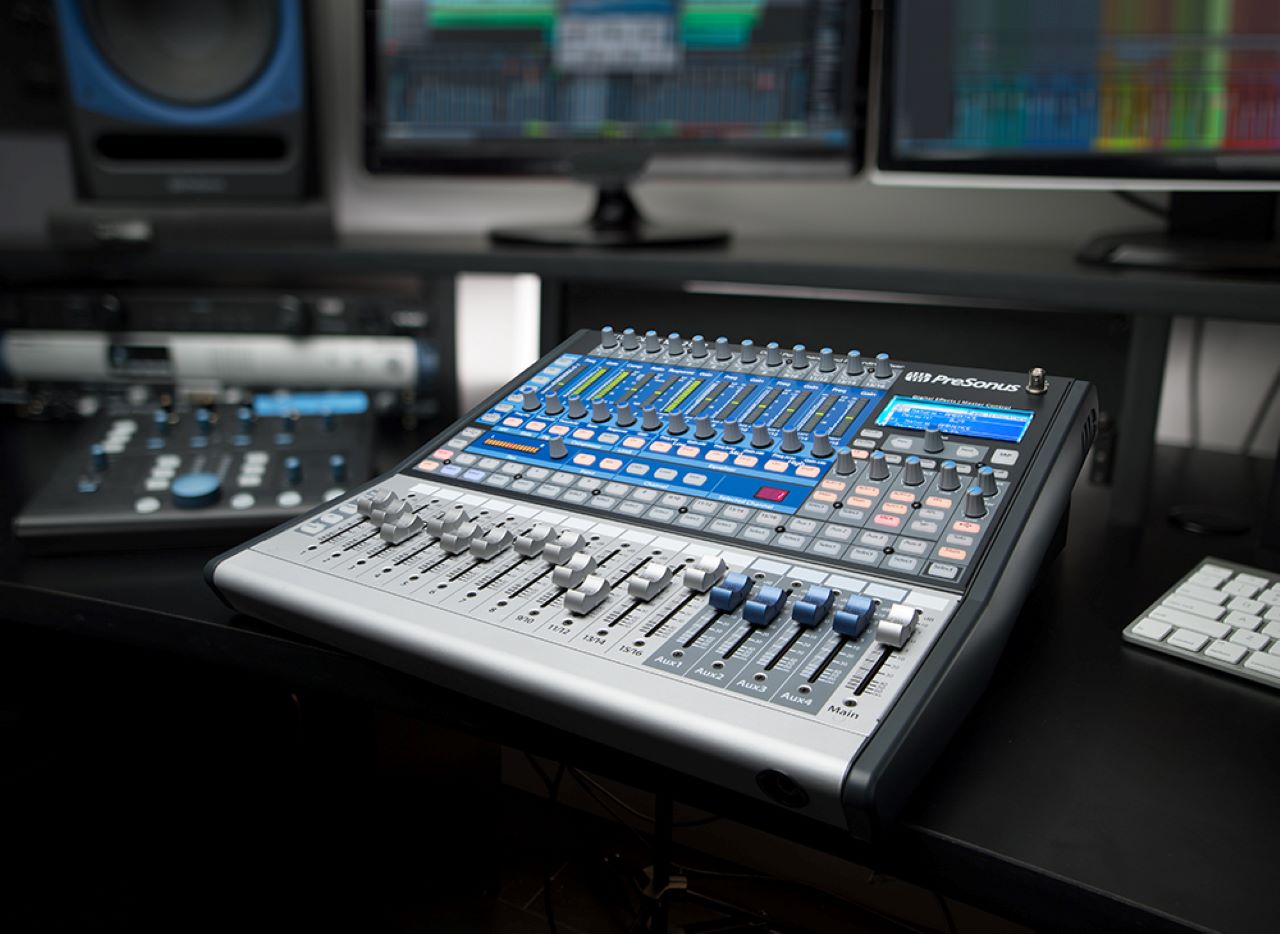
The StudioLive 16.0.2 USB features 16 channel inputs, 4 of them stereo channels, and 12 with XMAX mic preamps; a built-in 18×16 USB 2.0 interface; and more. Image Source.
Stepping into the professional realm, the PreSonus StudioLive 16.0.2 USB is a marvel in audio engineering. With 16 channels at its disposal, this mixer is designed for scenarios that demand precision and flexibility. Its digital nature ensures that audio clarity remains top-notch, and the built-in multitrack recording means you’re always ready to capture sound at its finest.
But it’s the integrated Fat Channel signal processing on all channels and buses that truly makes the StudioLive 16.0.2 stand out. This feature ensures that every input source is processed for optimal sound quality. And if that wasn’t enough, the inclusion of Virtual StudioLive software means you can remotely control the mixer, adding another layer of convenience to this professional-grade tool.
Key Features
- 16-channel digital mixer
- Built-in multitrack recording
- Fat Channel signal processing on all channels and buses
- Integrated Virtual StudioLive software for remote control
Pros
- Feature-rich
- Built-in multitrack recording
- Robust build
Cons
- Might be overkill for smaller setups
- Steeper learning curve for beginners
These products, each with its unique offerings, represent the pinnacle of audio mixing in today’s market. Whether you’re just starting out or are a seasoned professional, there’s a mixer in this list tailored for your needs.
FAQs
Can You Use 3 USB Microphones At Once?
Absolutely, you can use 3 USB microphones at once, but there are a few considerations and technicalities to keep in mind. When looking to connect multiple USB mics, it’s important to note the following:
Most computer operating systems recognize USB microphones as standalone audio devices. Thus, when you plug in multiple USB mics, your computer sees each one as a separate sound input. Software like Adobe Audition, Audacity, or DAWs (Digital Audio Workstations) primarily recognize one primary audio input at a time. However, with some software tweaks or by using specialized software, you can get multiple mics working simultaneously.
Here’s where it gets a tad technical. When recording with multiple USB mics, you might encounter synchronization issues, or “drift,” where one microphone might lag behind the other, even if by a few milliseconds. This is due to individual clock rates in each USB microphone. Over a prolonged recording, this can lead to a noticeable sync issue.
However, solutions such as ASIO4ALL or VoiceMeeter can help combine these separate USB mic inputs into a single stereo channel. This can mitigate the drift issue, allowing you to record multiple voices simultaneously without the headache of post-production sync.
How Can I Use Two USB Microphones At Once?
Using two USB mics simultaneously is quite feasible, especially with the right software and settings:
- Multiple Device Setup: Some operating systems and software allow for the utilization of multiple audio devices. For instance, on a Mac, you can utilize the ‘Audio MIDI Setup’ utility to create an ‘Aggregate Device,’ effectively combining both mics into one audio device. Windows users can explore applications like VoiceMeeter for a similar setup.
- Specialized Software: Software such as Spreaker Studio or Zencastr is designed to handle multiple USB microphone inputs, simplifying the process. These tools automatically recognize separate USB mics, making it much easier than manually setting up aggregate devices.
- Synchronization: Remember, each USB microphone operates with its own internal clock. This means one might record slightly faster or slower than the other, leading to potential synchronization issues in longer recordings. Software that caters to multiple USB mic setups often takes care of this issue, but it’s something to be mindful of if you’re combining inputs manually.
Can You Record Multiple USB Mics?
Yes, you can! Recording with multiple USB mics can be an excellent solution for podcasters, interviewers, or any recording scenario that involves more than one person. Here’s a breakdown:
Advantages
- Portability: USB mics tend to be more portable and easier to set up than some of their XLR counterparts.
- Cost-Effective: While high-end USB mics can be pricey, there are many budget-friendly options available that offer good sound quality.
- Plug-and-Play: Most USB mics are plug-and-play, meaning less hassle with drivers or additional gear.
Challenges
- Audio Drift: As mentioned, each USB mic has its own internal clock, leading to potential synchronization issues over prolonged recordings.
- Software Limitations: Not all recording software natively supports multiple USB mic recordings. You might need to delve into specialized software or adjust settings to make it work.
In terms of figures, the podcasting industry has seen a surge in the last few years, with a reported 55% of the US population having listened to a podcast in 2021. This growth has led to an increase in multi-person podcasts, often recorded remotely or in improvised studios, which further emphasizes the utility of using multiple USB mics for simultaneous recordings.
Conclusion
In the fast-evolving world of audio technology, multi-USB microphone mixers have truly transformed the way we capture sound, be it for podcasts, interviews, or music. By understanding the need for these mixers and familiarizing ourselves with the top brands and common queries, we are better equipped to make informed decisions. Remember, the right gear combined with knowledge can elevate your audio recording game to professional levels.
Related: Best Audio Interface With XLR Output
